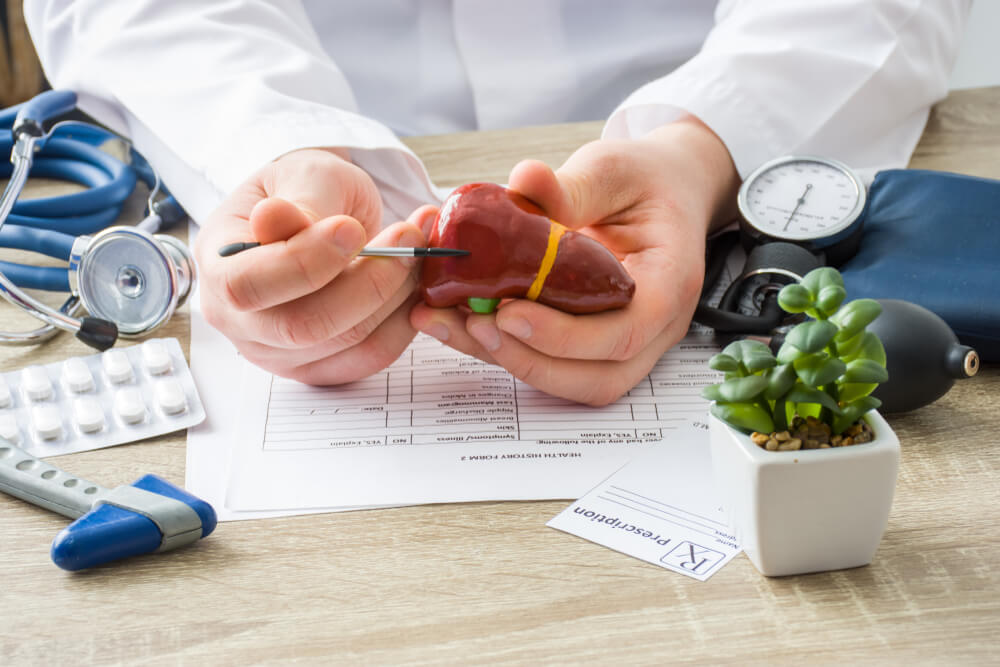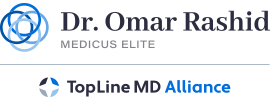The liver is among the largest human organs and also one of the most intricate. It can be found right below the lungs, on the right side.
This incredible organ is responsible for performing around 500 different functions. It’s responsible for protein synthesis and also plays a vital part in hormone production, bile secretion, breaking down toxins, and regulating blood glucose. It also helps in forming blood clots and fights off infections.
This organ is capable of regeneration, even in extreme cases, when 80% of it is removed.
Being such an intricate and important organ, liver cancer prevention should be high on everybody’s priority list.
This article will cover liver cancer causes, evaluate the risks of liver cancer, and give you valuable tips on avoiding the malignancy.
On the other hand, you can always reach out to Dr. Omar Rashid to learn more about liver cancer prevention and risk factors.
Liver Cancer Types
Before discussing liver cancer risk factors, let us talk about the different liver cancer types.
Primary Liver Cancer

These malignancies occur in the liver, and their “subtype” depends on the type of hepatic cells cancer develops in.
There is HCC or hepatocellular carcinoma, the most common liver malignancy, making for roughly 90% of all liver cancers and making for the fifth most common malignancy among all cancers. Liver cirrhosis is the most significant risk for liver cancer in the case of HCC, being responsible for around 80% of cases. When it comes to cirrhosis, the most prevalent causes are hepatitis C infection (in 30 to 50% of cases), alcohol abuse (10-20%), and hepatitis B infections (10-15% of cases)
In most cases, liver cancer is asymptomatic in the early stages, producing symptoms only when the tumor blocks the bile duct or major blood vessels.
Apart from this, known HCC symptoms may be:
- Jaundice
- Back pain
- Abdominal pain
- Weight loss
- Enlarged liver
- Fever
- Itching
- Fatigue
- Nausea and vomiting
There are a few liver cancer risk factors that may lead to the development of HCC. The most prevalent issues that may increase the risk of liver cancer are:
- A family history of liver cancer and other liver problems
- Alcohol abuse
- Fatty liver
- Aflatoxins
- Hepatitis infections
- Obesity
- Inherited liver problems
- Chemical exposure
Understanding the risks and causes of liver cancer can help people take the necessary steps to implement proper liver cancer prevention strategies and minimize organ exposure to the hazards mentioned above.
Secondary Liver Cancers
Without going into detail, these are malignancies that don’t originate from the liver. These are cancers that develop in other organs (like the prostate, lungs, pancreas) and may spread to the liver.
People High Risk of Developing Liver Cancer
As discussed above, some people have a higher risk of developing liver malignancies. For them, liver cancer prevention should be a higher priority.
They are:
- Patients with a family history of the disease
- People with inherited liver problems
- People with chronic viral hepatitis
- Obese patients
- People with NAFLD
- Patients suffering from chronic Hepatitis B infections
Fighting liver Cancer in Three Ways
After discussing liver cancer causes, here are three simple tips to help lower the chance of developing the malignancy, even for high-risk groups.
Getting Hepatitis Vaccines
The risk of liver cancer is most prevalent in patients who have chronic hepatitis infections (either C or B viruses). Research shows that HCV’s core protein can be carcinogenic, and in most cases, it’s involved in liver cancer development.
Data also suggests that patients with chronic hepatitis problems are at higher risk of suffering from cirrhosis, which can potentially lead to liver malignancies.
Hepatitis can spread through blood transfusions, contaminated needles, during childbirth, or sexual intercourse. Even though they pose a significant risk of liver cancer, both B and C infections are preventable.
Hepatitis B can be treated effectively with a vaccine, greatly helping fight liver cancer. Unfortunately, there’s no hepatitis C vaccine, but tremendously effective treatments are available.
Luckily, hepatitis B vaccines are now part of the standard infant vaccination protocol, available both in multi- and single-antigen formulations. The adult version of the vaccine is only recommended for high-risk categories.
All in all, when it comes to liver cancer prevention, hepatitis vaccination is among the simplest steps to avoid malignancy.
Hepatitis Risk Groups
Healthcare workers, HIV-infected patients, people who are receiving hemodialysis, injectable drug users are all at a higher risk of infections. With regular screenings, they can prevent infections that can potentially lead to cancer and may also avoid other liver complications.
Drinking Less Alcohol
One of the major components in drinks is ethanol, which goes through metabolization into the liver. Metabolizing the compound creates two byproducts: free radicals and acetaldehyde. The first will usually bind to DNA a cell signaling pathway components while the latter damages DNA and depletes glutathione depositories (this antioxidant plays a vital role in detoxification).
Excessive drinking and alcohol abuse can lead to abnormal cell function, nutritional deficiencies, changed immune responses, and a myriad of other problems.
When it comes to fighting liver cancer, it’s important to know that alcohol abuse leads to liver cirrhosis which is the number one among liver cancer risk factors. On the other hand, alcohol is also the main culprit in the development of the alcoholic fatty liver. Also known as alcoholic hepatitis, this disease causes the development of fat deposits in liver cells, leading to scarring and inflammation.
In terms of liver risk prevention, the easiest way to circumvent alcohol-related problems is by avoiding alcohol altogether. Unfortunately, there is no actual “safe” limit when it comes to alcohol consumption and fighting cancer.
If patients don’t want to give up alcohol, they can at least keep drinking within the recommended units.
Treating Fatty Liver

NAFLD or Non-Alcoholic Fatty Liver Disease manifests in the buildup of fat deposits in hepatic cells. In the case of NAFLD, alcohol isn’t among the culprits, but diabetes, high triglyceride levels, and obesity are.
The condition may lead to liver scarring and even cirrhosis. The condition is usually asymptomatic in the early stages, making the fight against cancer somewhat more difficult. When the disease does produce symptoms, it’s usually manifested through:
- Jaundice
- Edema in the legs
- Swollen abdomen
- Abdominal pain
- Fatigue
- Weight loss
The simplest way to avoid NAFLD is by following a healthy diet and a healthy body weight. Foods rich in fiber like whole grains, vegetables, and fruits greatly improve how the body metabolizes fat. Also, staying active with regular exercise can help with keeping off excess weight, aiding greatly in avoiding the disease.
Take Proper Care of Your Liver
Having a healthy liver is a precursor to a healthy and long life. This complex organ plays a vital role in balancing metabolism, hormone production, digestion, better circulation, and more. Taking proper care of it by consuming antioxidant-rich foods and anti-inflammatory compounds can do wonders for liver function.
Also, proper water intake, a healthy diet, body weight, and regular exercise can further improve liver functions.
Unfortunately, there is no single cause for malignancies, meaning that liver cancer can still occur. Even then, living a healthy life can greatly reduce the chances, even for high-risk groups.
As such, if you are looking for further steps to improve your preventive strategies, don’t hesitate to schedule an appointment with Dr. Omar Rashid.


